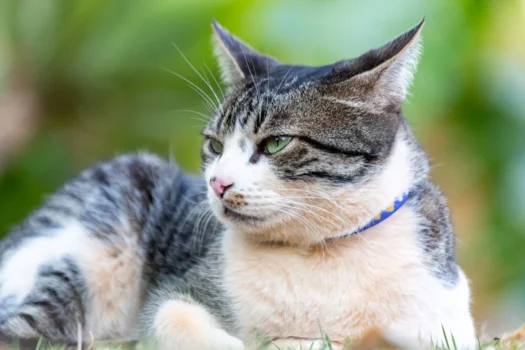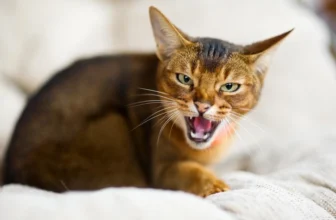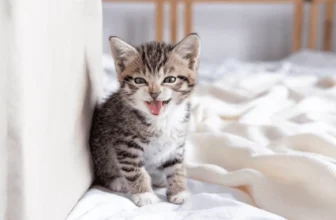It’s not uncommon for American Wirehair cat owners to experience bouts of aggression from their beloved feline friends. While the aggressive behavior can manifest in many forms, it can be perplexing for pet owners to understand the root cause of the behavior and how to properly address it. In this article, we will delve deep into the various types of aggressive behavior and their underlying causes, as well as how to identify and deal with this behavior when it occurs. So, if you’re a concerned American Wirehair cat owner, keep reading to learn all about understanding and managing aggressive behavior in your furry friend.
Understanding Aggressive Behavior
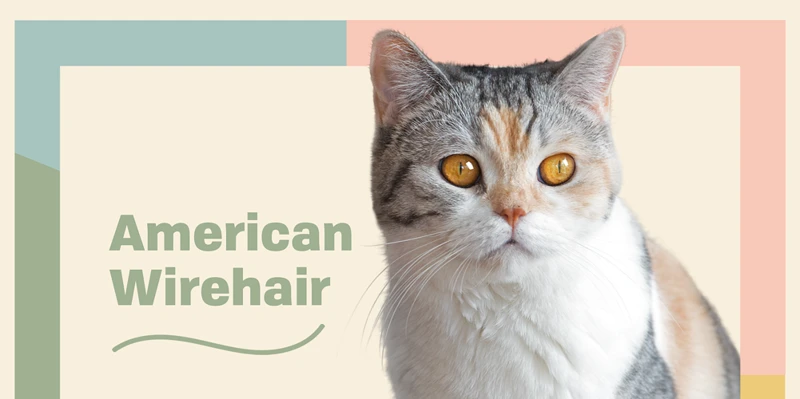
Understanding aggressive behavior is crucial for cat owners, especially those who have the American Wirehair breed. This breed is known to be quite loyal, loving, and playful. However, they are also prone to aggressive episodes. Aggressive behavior in cats can be perplexing and stressful for cat owners to deal with. They might be unsure of what has caused the aggressive behavior and how to handle it. In this section, we will explore the causes and types of aggressive behavior that American Wirehair cats might exhibit. Understanding these behaviors is the first step towards prevention and effective management.
What Causes Aggressive Behavior
Aggressive behavior in American Wirehair cats can occur due to various reasons, and sometimes it might be tough to identify the precise root of the issue. However, some causes are commonly associated with aggressive behavior in cats.
Causes of Aggressive Behavior in American Wirehair Cats:
| Causes | Description |
|---|---|
| Medical condition | Undiagnosed pain, illness, or injury can cause irritability and aggression in cats. If your American Wirehair cat starts to show aggression suddenly, you should take them to the vet for a check-up to rule out any medical problems. |
| Territorial behavior | American Wirehair cats can be very territorial animals. If they feel that their space is being invaded by other animals, including other cats, dogs, or even humans, they may become aggressive to protect their territory. |
| Fear | If your American Wirehair cat is afraid of something, it may result in aggressive behavior. For instance, they may become aggressive if they feel threatened by a new person, unfamiliar situation, or even loud noises. |
| Play aggression | Although play is crucial for a cat’s physical and mental stimulation, it may result in aggressive behavior. Excessive playtime with humans or other animals can result in overstimulation, leading to aggressive behavior. |
Identifying the reason for your American Wirehair’s aggressive behavior will help you deal with it more effectively. If you suspect that your cat is experiencing aggression due to medical issues, seek veterinary care right away. If the aggression is due to territorial behavior, then training your cat can help reduce territorial aggression. For more information on how to prevent aggression in American Wirehair cats in multi-cat homes, check our article(link).
Types of Aggressive Behavior
Aggressive behavior in American Wirehair cats manifests in different ways, and it is essential to understand the types of aggression exhibited. Below are some of the common types of aggression in American Wirehair Cats:
| Type of Aggression | Description |
|---|---|
| Fear aggression | This type of aggression is displayed when a cat perceives a threat and needs to protect itself from harm. The cat may hiss, growl, hide, or even lash out in an attempt to flee from the threat. |
| Territorial aggression | When a cat perceives that its territory is under threat, it can display territorial aggression. The cat may spray urine to mark its territory or even attack the perceived threat. |
| Redirected aggression | This type of aggression occurs when a cat is stimulated or aroused by something they can’t directly attack. The cat may then turn their aggression towards a different target, such as a person or another pet in the home. |
| Play aggression | Some American Wirehair cats can exhibit aggression during playtime. This may include biting, scratching, or chasing moving objects, like toys or even people. |
| Predatory aggression | This type of aggression is instinctual and often seen in outdoor cats. When they see prey, like birds or rodents, they might display aggressive behavior like stalking, chasing, or pouncing on the prey. |
It’s crucial to identify the type of aggression a cat is displaying before taking any measures to deal with it. Understanding the root cause of the aggressive behavior can help in providing an appropriate solution that can help in preventing future aggressive outbursts. Knowing how to recognize and respond to different types of aggression can be helpful in keeping your American Wirehair cat happy and healthy.
For more information on aggression in American Wirehair cats, please visit our article on Aggression in American Wirehair Cats or read our tips on Preventing Aggression in American Wirehair Cats in Multicat Homes.
Identifying Aggressive Behavior in American Wirehair Cats
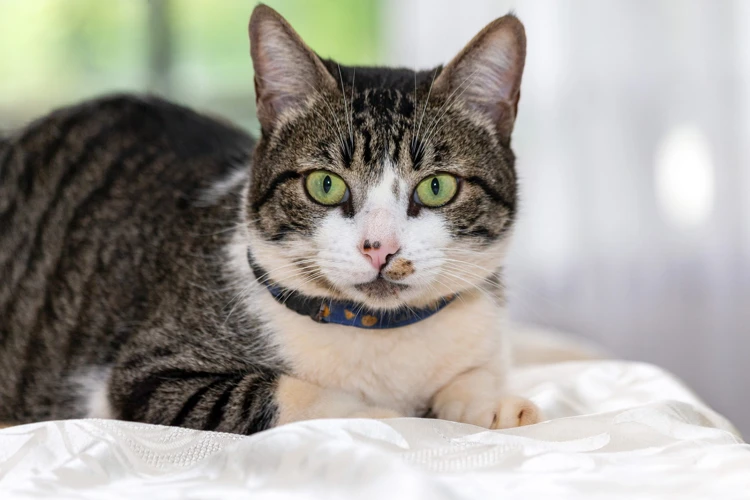
It’s essential to understand the signs of aggressive behavior in American Wirehair cats to prevent any potential harm to both the cat and its owner. These behaviors can vary depending on the cause and circumstance. Recognizing the context of the aggressive behavior is crucial in determining the most appropriate course of action. In the next sections, we will discuss the different signs of aggressive behavior and how to identify them in American Wirehair cats. If you suspect your cat may be displaying aggressive behavior, it’s important to examine the underlying causes of the behavior. This can help you determine whether training, medical intervention, or other measures are necessary.
Signs of Aggression
Aggression in American Wirehair cats is a common problem, and every owner should be aware of the signs and types of aggressive behavior. Recognizing the signs of aggression is the first step in dealing with it.
Here are some of the signs of aggression in American Wirehair cats that owners should be aware of:
| Signs of Aggression | Description |
|---|---|
| Growling or hissing | American Wirehair cats may growl or hiss when they are feeling threatened or frightened. |
| Swatting or scratching | When threatened or provoked, American Wirehair cats may swat or scratch at their perceived threat. |
| Biting | Biting is a more severe form of aggression in American Wirehair cats and should not be ignored. |
| Stalking behavior | American Wirehair cats may exhibit stalking behavior when they are feeling aggressive or threatened. |
| Puffed up tail or fur | When feeling threatened or aggressive, American Wirehair cats may puff up their tail or fur as a sign of intimidation. |
| Attacking or chasing | In severe cases of aggression, American Wirehair cats may attack or chase perceived threats or other animals in the home. |
It’s important to note that not all growling or hissing is a sign of aggression in American Wirehair cats. Sometimes, they may make these sounds when playing or feeling overstimulated. However, if these behaviors are persistent and accompanied by other signs of aggression, it may be time to take action.
If you notice any of these signs of aggression in your American Wirehair cat, it’s important not to react with aggression or punishment. This can escalate the situation and make it worse. Instead, consider working with a veterinarian or animal behaviorist to identify the cause of the aggression and develop a plan to address it.
To learn more about the specific types of aggression in American Wirehair cats, check out our article on Aggression in American Wirehair Cats.
Context of Aggressive Behavior
The context of aggressive behavior in American Wirehair cats is very important to understand. It can help in identifying the cause of the aggression and finding ways to deal with it.
Territorial Aggression: This type of aggression is common among American Wirehair cats. They are protective of their space, and any sort of intrusion can cause aggressive behavior. If you notice your Wirehair becoming aggressive around certain areas of your home, it’s likely territorial aggression. To prevent this, try giving your cat a dedicated area that they can call their own.
Fear Aggression: Fear can cause American Wirehair cats to become aggressive. If they are scared, cornered or feel threatened, they will attack. Signs of fear aggression include hissing, spitting, or cowering. If you notice these signs in your cat, try to remove the source of fear or give them a safe space to retreat to.
Redirection Aggression: Sometimes wires can become aggressive when playing, especially if they’re over-stimulated. If your Wirehair overreacts during playtime, try reducing playtime and redirecting their energy towards other activities.
It’s crucial to note that American Wirehair cats are generally not an aggressive breed. If you notice persistent aggression in your cat, it’s essential to seek professional help. A veterinarian or an animal behaviorist can suggest various training techniques to help reduce aggressive behavior, such as positive reinforcement or behavior modification.
If you want to learn more about training techniques for aggressive Wirehair cats, you may find this article helpful.
Dealing with Aggressive Behavior in American Wirehair Cats
As loving as American Wirehair Cats can be, they are still animals that can demonstrate aggressive behaviors. Addressing aggressive behavior in cats can be a perplexing task, but there are ways to tame your cat’s aggression. While some Wirehair cats may show territorial aggression, others may demonstrate fear aggression, and some cats may become overly aggressive during playtime. In this section, we’ll discuss different techniques to deal with aggressive behavior, including preventative measures, training solutions, and medical interventions.
Preventative Measures
One of the most crucial preventative measures for managing aggressive behavior in American Wirehair Cats is proper socialization. Early exposure to different people, pets, and environments can help your cat stay calm and relaxed in varied situations. Additionally, providing a secure environment for your pet can make them less fearful and reduce the likelihood of aggression. This could involve creating designated spaces for them to retreat to, such as enclosed cat trees or a separate room, where they can feel safe and away from potential sources of provocation.
Another effective preventative strategy is to ensure your cat has access to adequate playtime and exercise. Daily play sessions are essential for maintaining a healthy and contented cat and can also develop your cat’s social skills. Playtime can help reduce stress and prevent frustration, which are common causes of aggressive behavior. Providing stimulating play toys such as a scratching post or interactive toys like remote control mice can reduce boredom and prevent aggression.
It is also important to watch for signs of discomfort, anxiety or fear in your American Wirehair cat. Fearful cats are more likely to act out aggressively if they are scared or threatened and need to be handled with care. Some cats may be prone to fear-related aggression in specific circumstances, such as veterinary visits or car travel. Being aware of your cat’s fear triggers, and gently and calmly counter-conditioning your cat to these situations can help to reduce anxiety and prevent aggression.
Table:
| Preventative Measures | Description |
|---|---|
| Socialization | Expose your cat to different people, pets, and environments early in life for a calm and relaxed pet. |
| Secure Environment | Create a safe and secure environment for your cat to retreat to, reduce fear and anxiety. |
| Playtime and Exercise | Engage your cat in daily play sessions and provide stimulating toys for relief from boredom and aggression. |
| Fear Triggers | Be aware of your cat’s fear triggers, particularly in specific situations such as veterinary visits or car travel. |
For further information on how to deal with aggression in American Wirehair Cats, you can read our article on territorial aggression or our article on fear aggression. Additionally, if you want to understand how playtime can help reduce aggression, read our article on playtime and reducing aggression in wirehair cats.
Training Techniques
When dealing with aggressive behavior in American Wirehair cats, training techniques can be used to modify their behavior. It is important to remain patient during the process, as it may take time for them to adapt.
One effective technique is known as redirecting. This involves redirecting the cat’s attention to a more appropriate object or action when they engage in aggressive behavior, such as scratching or biting. For example, if the cat starts to scratch at furniture, redirect them to a scratching post placed nearby. This provides a positive reinforcement for good behavior, giving the cat an alternative outlet for their natural instincts.
Another technique is known as clicker training. This involves using a clicking sound to signal when the cat exhibits positive behavior and then following up with a treat or reward. This can be especially effective for teaching cats to refrain from biting or scratching during playtime. Consistency is key for clicker training to be successful.
It is important to note that punishment-based training techniques are not recommended for cats, as they can lead to fear and aggression. Instead, positive reinforcement should be the focus. This can include verbal praise, treats, and playtime with their favorite toys.
Training techniques can be especially effective when used in combination with preventative measures and medical intervention, as discussed in the previous sections. By addressing the root cause of the cat’s aggression and using positive reinforcement to modify behavior, owners can establish a healthy and happy relationship with their American Wirehair cat.
Check out the table below for a summary of effective training techniques:
| Training Technique | Description |
|——————– |—————————————————————– |
| Redirecting | Redirecting the cat’s attention to a more appropriate object/action |
| Clicker Training | Using a clicking sound to signal positive behavior and reward |
| Positive Reinforcement | Verbal praise, treats, and playtime with favorite toys |
Medical Intervention
When dealing with aggressive behavior in American Wirehair Cats, medical intervention may become necessary. The first step is to consult with a veterinarian to rule out any underlying medical conditions that could be causing the aggressive behavior. Here are some medical interventions that your veterinarian may recommend:
- Prescription medication: In some cases, prescription medication may be necessary to manage your cat’s aggression. This could include anti-anxiety medication, mood stabilizers, or even pain medication if the aggression is caused by an underlying medical condition.
- Hormonal therapy: In intact male cats, testosterone can sometimes contribute to aggressive behavior. Neutering your male American Wirehair Cat can reduce testosterone levels, which may help reduce aggression.
- Medical management of underlying conditions: In some cases, aggressive behavior can be a symptom of an underlying medical condition such as hyperthyroidism. Medical management of the underlying condition can help reduce aggression.
It’s important to remember that medication should only be used under the direction of a veterinarian and as part of a comprehensive treatment plan. In addition to medical intervention, it’s important to continue with preventative measures and training techniques to help manage your American Wirehair Cat’s aggressive behavior.
Conclusion
After delving into the world of aggressive behavior in American Wirehair cats, it’s understandable that you may feel worried or overwhelmed by the possibility of encountering this behavior in your furry friend. However, it’s important to remember that aggression in cats is not uncommon and can often be addressed with the appropriate measures.
Overall, prevention is key. By providing your cat with plenty of mental and physical stimulation, a healthy diet, regular exercise and playtime, and a stress-free environment, you can decrease the likelihood of aggressive behavior developing. When it comes to addressing aggressive behavior, identifying the underlying cause is essential in order to effectively manage the issue.
There are a range of techniques that can be used to address the different types of aggressive behavior, from redirecting aggression using toys or other positive reinforcement to seeking medical intervention when necessary.
It’s important to never punish or physically discipline your cat for aggressive behavior, as this can only serve to exacerbate the issue and create further stress for both you and your pet. Instead, focus on creating a positive and supportive relationship with your cat, one that involves plenty of love and patience.
Remember, despite their reputation for being independent and aloof, cats are social creatures who thrive on companionship and positive interaction. By building a strong bond with your American Wirehair cat, you can help prevent aggression and create a happy and healthy home for both you and your feline friend.
Frequently Asked Questions
Why do American Wirehair Cats exhibit aggressive behavior?
There are several reasons why American Wirehair Cats may exhibit aggressive behavior, including territoriality, fear, anxiety, or medical issues.
What are some common types of aggressive behavior in American Wirehair Cats?
Common types of aggressive behavior in American Wirehair Cats include biting, scratching, hissing, growling, and lunging.
How do I know if my American Wirehair Cat is exhibiting aggressive behavior?
Signs of aggressive behavior in American Wirehair Cats include hissing, growling, attacking without provocation, and exhibiting tense body language.
How can I prevent my American Wirehair Cat from exhibiting aggressive behavior?
Preventative measures include proper socialization, allowing for ample play and exercise, providing a stress-free environment, and behavior training.
Can aggressive behavior in American Wirehair Cats be treated with medication alone?
No, medical intervention alone is typically not enough to treat aggressive behavior in American Wirehair Cats. A combination of medication and behavior training is often necessary.
What should I do if my American Wirehair Cat displays aggressive behavior towards me?
If your American Wirehair Cat displays aggressive behavior towards you, it is important to back away slowly and give the cat space. Do not try to pick up or hold the cat until it has calmed down.
Can American Wirehair Cats become less aggressive over time?
With proper training and socialization, American Wirehair Cats can become less aggressive over time. However, it is important to address aggressive behavior early on to prevent it from worsening.
Should I punish my American Wirehair Cat for exhibiting aggressive behavior?
No, punishing your American Wirehair Cat for exhibiting aggressive behavior can actually make the behavior worse. Positive reinforcement and behavior training is a more effective approach.
Is it safe to let my American Wirehair Cat around children?
It is important to always supervise interactions between American Wirehair Cats and children. If the cat exhibits aggressive behavior towards children, it may not be safe to continue those interactions.
Can aggressive behavior in American Wirehair Cats be a sign of a medical issue?
Yes, aggressive behavior in American Wirehair Cats can be a sign of an underlying medical issue, such as pain or discomfort. It is important to have your cat evaluated by a veterinarian if aggressive behavior suddenly emerges.

